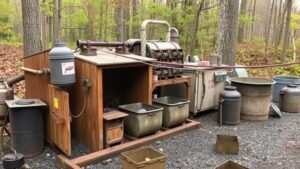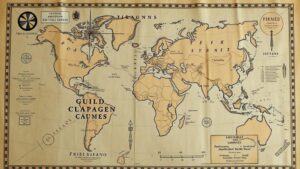Cross-Referencing First-Person Stories from Gold Rush Towns to Find Hidden Wealth
Introduction
The Gold Rush period, particularly in the United States during the mid-19th century, marked a transformative era characterized by aspiration, adventure, and economic transition. This period saw an influx of individuals migrating towards Gold Rush towns with the hope of unearthing wealth. But, the stories encapsulated in personal narratives from this era also contain an untapped potential to reveal hidden wealth–stemming from insights about economic activities, social dynamics, and natural resources. By cross-referencing first-person accounts from various Gold Rush towns, researchers can uncover layers of wealth that may not be immediately apparent through traditional historical analyses.
Historical Context
The California Gold Rush, which began in 1848 and lasted until around 1855, drew approximately 300,000 fortune-seekers to the West. Initial discoveries, such as James Marshalls find at Sutters Mill in January 1848, quickly triggered mass migrations and established new settlements. Towns such as San Francisco, Sacramento, and Nevada City sprang from this rush, each evolving with unique economic and social structures as they catered to miners and merchants.
Methodology of Cross-Referencing
Sources of First-Person Accounts
First-person stories from this period are often documented in diaries, letters, oral histories, and newspaper articles. e narratives provide unique insights into individual experiences, community interactions, and local economic conditions. For example, the diary of a miner named Patrick Breen, who chronicled his experiences in the Sierra Nevada region, offers invaluable data regarding mining techniques and social conditions.
Cross-Referencing Techniques
To systematically uncover hidden wealth, researchers can apply several techniques when cross-referencing these primacy sources:
- Chronological Matching: Aligning personal accounts with historical events to discern patterns and trends in resource allocation.
- Geographical Mapping: Locating mentions of resources, settlements, or economic activities to identify potential areas of untapped wealth.
- Thematic Analysis: Categorizing narratives by themes, such as mining, trade, and settlement, to highlight correlations between personal experiences and larger economic trends.
Case Study: Nevada City
Nevada City, located in Californias Nevada County, emerged as a prominent mining town during the Gold Rush. Personal accounts from miners and merchants reveal a complex interplay between mining prosperity and community development. For example, John Muir, who later became an influential naturalist, documented his experiences around this town, providing insights into both the ecological impact of mining and the socio-economic vibrancy of the community.
Mining Techniques as Indicators of Wealth
Muir’s accounts not only describe the sheer quantity of gold extracted but also shed light on advanced mining techniques employed by locals. His observations indicated that wealth was not only found in gold but also in the establishment of complex infrastructures that supported mining endeavors.
Statistical Insights
According to economic reports, the first year of the Gold Rush alone yielded approximately $2 billion (equivalent to $53 billion today) of gold. But, the records from first-person accounts suggest that the hidden value of ancillary businesses–such as supplies, equipment, and services–provided significant economic contributions. For example, the thriving business of loading supplies for miners translates into another layer of wealth that is often overlooked.
Challenges in Interpretation
Limitations of Personal Narratives
While first-person accounts are invaluable, they are not without limitations. These narratives can be biased or selective. Individuals may chronicle their successes while omitting challenges or failures, leading to an exaggerated portrayal of wealth. So, corroborating these stories with external data is essential for a holistic understanding.
Conclusion and Actionable Takeaways
Cross-referencing first-person accounts from Gold Rush towns presents a fertile ground for discovering hidden wealth and understanding economic landscapes. By employing structured methodologies such as chronological matching and thematic analysis, researchers can unveil layers of economic activity that expand beyond the mere pursuit of gold.
- Use primary sources effectively by documenting personal stories and comparing them with economic data.
- Investigate the socio-economic frameworks surrounding mining towns to identify alternative wealth sources.
- Acknowledge potential biases in personal narratives while seeking corroborating evidence.
Ultimately, understanding the hidden wealth of Gold Rush towns contributes to a richer historical narrative, one wherein economic opportunities extend beyond the individual pursuit of gold, reflecting the dynamic interactions of community development.



